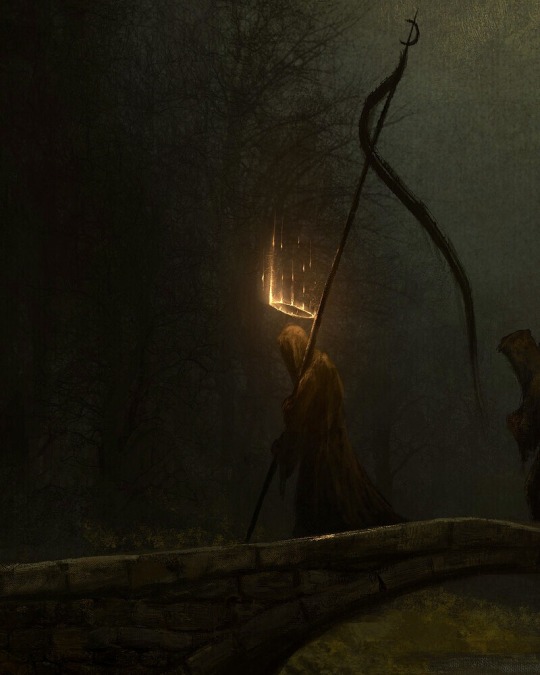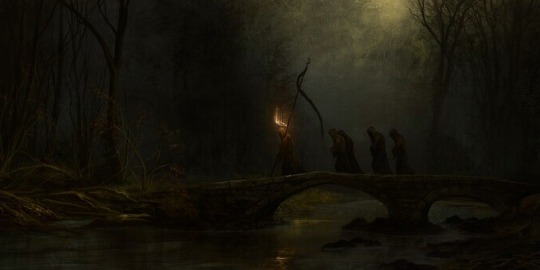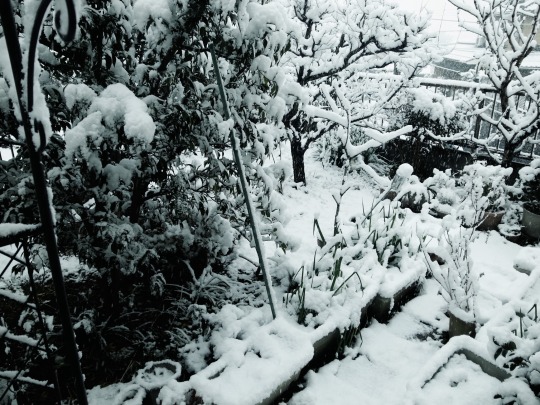#Appalachian folklore
Explore tagged Tumblr posts
Text
okay. i'm up to episode five now, so, by increasingly popular demand lol:
my initial thoughts about old gods of appalachia
i think it's really smart in what it relays as "appalachian horror," because this is actually what The Appalachian Gothic is supposed to give
what i mean is it's not just like the usual spoopy mythical forest/"don't investigate the noises in the woods" stuff alone. dgmw, obviously i love the urban legends
but the gothic of an area or time period needs cultural elements tied in to really make it chilling, and this does it well. it stands out in the way that it incorporates the genuine horrors of humanity in appalachia with the supernatural element everyone is drawn to about these mountains. it's very creatively done
like in the barlo, kentucky saga i am currently listening to, it's the dangerous coal mines and the near-possessed preacher turning all hellfire n brimstone at the behest of the haints. it preys (i use this word positively here) on this mix of very specific but common fears, both existential and otherwise, held by residents of the appalachian south. love it
as an aside, i love the narrator's accent because it sounds like mine :') a lifetime of code switching means mine isn't quite as strong unfortunately, but our pronunciation habits and colloquialisms are next to identical, so there manages to be this like warm and nostalgic feeling to it, too
because it's honestly so nice to hear my accent and my family's accent as a critical part of a superb story being told, and not just as a vehicle for mockery and stereotypes :')))
all in all... it is Good Shit
488 notes
·
View notes
Text


Art by Roberto Ferri
#art#artist#artblr#painting#oil on canvas#oil painting#fine art#artists#art community#goth#gothic#dark academia#horror#macabre#witch#witchcraft#witchblr#appalachian folklore#appalachian gothic#appalachian witch#witchcore#gothcore#art gallery#art blog
9K notes
·
View notes
Text


#goth#gothic#gothcore#rural#aesthetic#appalachia#midwest#appalachian trail#appalachian culture#appalachian folklore#appalachian horror#rural photography#rural decay#rural america#rural life#ruralcore#southern#small town america#small town usa
5K notes
·
View notes
Text

#deer#deers#goth#nature#gothic#gothcore#photography#forestcore#forest#appalachia#rural#rural photography#rural america#ruralcore#rural life#appalachian mountains#appalachian folklore#dark cottagecore#appalachian horror#appalachian trail#americana#woods
2K notes
·
View notes
Text

#goth#gothic#dark academia#horror#leather#rural#southern#southern goth#aesthetic#ruralcore#rural america#rural life#appalachia#appalachain trail#appalachian folklore#rural gothic#southern goth aesthetic
2K notes
·
View notes
Text

†
#goth#gothic#night#chapel#church#appalachian trail#appalachian folklore#appalachia#rural#christianity#rural america#rural photography#rural decay#rural life#midwest
1K notes
·
View notes
Text


#ethel cain#hayden anhedönia#preachers daughter#preacher’s daughter#rural#rural gothic#goth#rural america#americana#ruralcore#rural decay#rural life#rural photography#midwest#appalachia#religion#religious imagery#appalachian culture#appalachian folklore#lamb#gothcore
755 notes
·
View notes
Text

#goth#gothic#gothcore#horror#rural#ruralcore#eerie#eeriecore#rural decay#occult#midwest#regional gothic#appalachia#appalachian folklore#small town america#small town usa#rural america#rural life#rural aesthetic
286 notes
·
View notes
Text

Piotr Stachiewicz - “Regina Caeli”
#girlblogger#catholic aesthetic#catholic academia#Catholic#catholica#Christian#god loves you#Jesus loves you#repent and forgive#I’m a sinner#glory of god#church aesthetic#appalachian horror#southern gothic americana#Americana#southern gothic#gothic#Appalachian gothic#Appalachia#appalachian folklore#Virgin Mary#blessed mother#girlblogging#girly things#cinnamon girl#lux lisbon#lana del rey#lizzy grant#coquette#salve Regina
996 notes
·
View notes
Text

†
#horror#appalachian gothic#appalachian trail#appalachian folklore#appalachian culture#appalachian mountains#appalachian witch#goth#gothic#macabre#dark art#eerie#eeriecore#witch#witches#witchcraft#witchcore#forest#woods#witchblr#rural
487 notes
·
View notes
Text


The Not Deer
commissions open! DM me if you are interested
#art on tumblr#digital art#artist on tumblr#original character#art#artwork#not deer#deer#horror#nature horror#nature#appalachain horror#appalachia#cw g0re#tw g0re#g0recore#g0re art#night vision goggles#night vision#night#ghost deer#please commission me#commissions open#open commissions#art comms open#comms open#appalachian folklore#artists on tumblr#digital artist
155 notes
·
View notes
Text
the appalachian murder ballad <3 one of the most interesting elements of americana and american folk, imo!
my wife recently gave me A Look when i had one playing in the car and she was like, "why do all of these old folk songs talk about killing people lmao" and i realized i wanted to Talk About It at length.
nerd shit under the cut, and it's long. y'all been warned
so, as y'all probably know, a lot of appalachian folk music grew its roots in scottish folk (and then was heavily influenced by Black folks once it arrived here, but that's a post for another time).
they existed, as most folk music does, to deliver a narrative--to pass on a story orally, especially in communities where literacy was not widespread. their whole purpose was to get the news out there about current events, and everyone loves a good murder mystery!
as an aside, i saw someone liken the murder ballad to a ye olde true crime podcast and tbh, yeah lol.
the "original" murder ballads started back across the pond as news stories printed on broadsheets and penned in such a way that it was easy to put to melody.
they were meant to be passed on and keep the people informed about the goings-on in town. i imagine that because these songs were left up to their original orators to get them going, this would be why we have sooo many variations of old folk songs.
naturally then, almost always, they were based on real events, either sung from an outside perspective, from the killer's perspective and in some cases, from the victim's. of course, like most things from days of yore, they reek of social dogshit. the particular flavor of dogshit of the OG murder ballad was misogyny.
so, the murder ballad came over when the english and scots-irish settlers did. in fact, a lot of the current murder ballads are still telling stories from centuries ago, and, as is the way of folk, getting rewritten and given new names and melodies and evolving into the modern recordings we hear today.
305 such scottish and english ballads were noted and collected into what is famously known as the Child Ballads collected by a professor named francis james child in the 19th century. they have been reshaped and covered and recorded a million and one times, as is the folk way.
while newer ones continued to largely fit the formula of retelling real events and murder trials (such as one of my favorite ones, little sadie, about a murderer getting chased through the carolinas to have justice handed down), they also evolved into sometimes fictional, (often unfortunately misogynistic) cautionary tales.
perhaps the most famous examples of these are omie wise and pretty polly where the woman's death almost feels justified as if it's her fault (big shocker).
but i digress. in this way, the evolution of the murder ballad came to serve a similar purpose as the spooky legends of appalachia did/do now.
(why do we have those urban legends and oral traditions warning yall out of the woods? to keep babies from gettin lost n dying in them. i know it's a fun tiktok trend rn to tell tale of spooky scary woods like there's really more haints out here than there are anywhere else, but that's a rant for another time too ain't it)
so, the aforementioned little sadie (also known as "bad lee brown" in some cases) was first recorded in the 1920s. i'm also plugging my favorite female-vocaist cover of it there because it's superior when a woman does it, sorry.
it is a pretty straightforward murder ballad in its content--in the original version, the guy kills a woman, a stranger or his girlfriend sometimes depending on who is covering it.
but instead of it being a cautionary 'be careful and don't get pregnant or it's your fault' tale like omie wise and pretty polly, the guy doesn't get away with it, and he's not portrayed as sympathetic like the murderer is in so many ballads.
a few decades after, women started saying fuck you and writing their own murder ballads.
in the 40s, the femme fatale trope was in full swing with women flipping the script and killing their male lovers for slights against them instead.
men began to enter the "find out" phase in these songs and paid up for being abusive partners. women regained their agency and humanity by actually giving themselves an active voice instead of just being essentially 'fridged in the ballads of old.
her majesty dolly parton even covered plenty of old ballads herself but then went on to write the bridge, telling the pregnant-woman-in-the-murder-ballad's side of things for once. love her.
as a listener, i realized that i personally prefer these modern covers of appalachian murder ballads sung by women-led acts like dolly and gillian welch and even the super-recent crooked still especially, because there is a sense of reclamation, subverting its roots by giving it a woman's voice instead.
meaning that, like a lot else from the problematic past, the appalachian murder ballad is something to be enjoyed with critical ears. violence against women is an evergreen issue, of course, and you're going to encounter a lot of that in this branch of historical music.
but with folk songs, and especially the murder ballad, being such a foundational element of appalachian history and culture and fitting squarely into the appalachian gothic, i still find them important and so, so interesting
i do feel it's worth mentioning that there are "tamer" ones. with traditional and modern murder ballads alike, some of them are just for "fun," like a murder mystery novel is enjoyable to read; not all have a message or retell a historical trial.
(for instance, i'd even argue ultra-modern, popular americana songs like hell's comin' with me is a contemporary americana murder ballad--being sung by a male vocalist and having evolved from being at the expense of a woman to instead being directed at a harmful and corrupt church. that kind of thing)
in short: it continues to evolve, and i continue to eat that shit up.
anyway, to leave off, lemme share with yall my personal favorite murder ballad which fits squarely into murder mystery/horror novel territory imo.
it's the 10th child ballad and was originally known as "the twa sisters." it's been covered to hell n back and named and renamed.
but! if you listen to any flavor of americana, chances are high you already know it; popular names are "the dreadful wind and rain" and sometimes just "wind and rain."
in it, a jealous older sister pushes her other sister into a river (or stream, or sea, depending on who's covering it) over a dumbass man. the little sister's body floats away and a fiddle maker come upon her and took parts of her body to make a fiddle of his own. the only song the new fiddle plays is the tale about how it came to be, and it is the same song you have been listening to until then.
how's that for genuinely spooky-scary appalachia, y'all?
#appalachia#appalachian murder ballads#murder ballads#appalachian music#appalachian culture#appalachian history#appalachian#appalachian folklore#appalachian gothic#tw violence against women#cw violence against women#cw murder#tw murder#folk music#folk#txt
3K notes
·
View notes
Text


Nightwalkers by Ben J
#art#artist#artblr#painting#oil on canvas#oil painting#dark art#macabre#goth#gothic#appalachian horror#art community#horror#dark academia#artists#witch#witchcore#appalachian gothic#witchblr#appalachian witch#art blog#modern art#contemporary art#art gallery#digital art#gothcore#appalachian folklore#appalachia#art history
9K notes
·
View notes
Text

#goth#gothic#gothcore#rural#midwest#horror#eerie#rural decay#aesthetic#ruralcore#rural photography#rural america#rural life#appalachia#appalachian folklore#appalachian trail#appalachian mountains#appalachian witch#dark academia#witch#witches#witchcraft#witchblr#witchcore#eeriecore
3K notes
·
View notes
Text

#snowy#snow#rural gothic#southern goth aesthetic#rural aesthetic#ruralcore#rural photography#rural america#rural decay#rural life#rural#southern americana#winter#winter time#rural landscape photography#rural south#rural landscape#appalachain gothic#appalachian folk magic#appalachian folklore#appalachain mountains#appalachian trail#appalachia#southern gothic#american gothic#small town gothic#gothic#goth
104 notes
·
View notes


